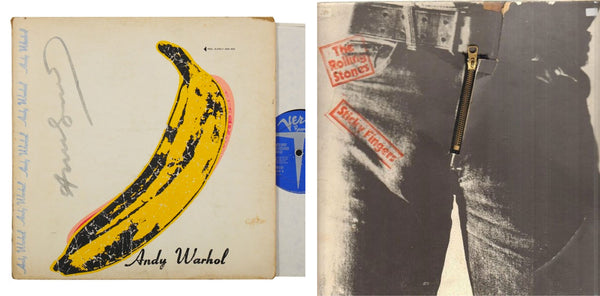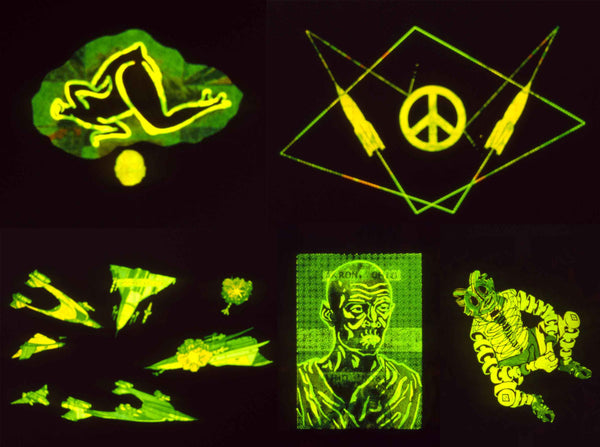
 "In 1978, Devo was getting sued by Warner Brothers, because we had signed with Richard Branson (Virgin) and Warner Brothers for a record deal, and so there was a lawsuit in London. Jerry Casale and I flew there, and we were staying on a houseboat on the Thames with Richard Branson. We were kinda living with him on this houseboat while the trial was going on. They never really needed Jerry and I to be in court, I don’t know why they even had us over there, maybe someone would call us into court as a witness, but it didn’t happen. There’s a horror story behind that, which testifies how Richard Branson later became a billionaire, but we won’t talk about that right now…
"In 1978, Devo was getting sued by Warner Brothers, because we had signed with Richard Branson (Virgin) and Warner Brothers for a record deal, and so there was a lawsuit in London. Jerry Casale and I flew there, and we were staying on a houseboat on the Thames with Richard Branson. We were kinda living with him on this houseboat while the trial was going on. They never really needed Jerry and I to be in court, I don’t know why they even had us over there, maybe someone would call us into court as a witness, but it didn’t happen. There’s a horror story behind that, which testifies how Richard Branson later became a billionaire, but we won’t talk about that right now……What I will tell you about is that while I was living on that houseboat I was already well into making artwork on cards, kinda postcard size cards and saving them as part of my image bank, or my lyrics. I would save lyrics, and stage ideas for Devo, or costume ideas for Devo. I would just put things on these cards, any artwork that I really liked. So while I was living on the houseboat I was taking different sources of images. You have to imagine this whole thing 3x5 inches. 

 The images in the back that are kind of Japanese superheroes were skin tattoos that I bought in Chinatown here in Los Angeles around 1977. I had kept them around and used them in my work sometimes. The stamps are just real postage stamps because I was a nerd and I collected stuff like that. This crossword puzzle and the soccer player squatting down, they came from newspapers in London while I was there. I was making all of these little collages, and I loved them, and they went into a book. They just kinda got filed away.
The images in the back that are kind of Japanese superheroes were skin tattoos that I bought in Chinatown here in Los Angeles around 1977. I had kept them around and used them in my work sometimes. The stamps are just real postage stamps because I was a nerd and I collected stuff like that. This crossword puzzle and the soccer player squatting down, they came from newspapers in London while I was there. I was making all of these little collages, and I loved them, and they went into a book. They just kinda got filed away.

Devo eventually put out our first album, second album, third album, fourth album, I think we might have had five albums out by 1985, maybe six, (ed. note: it was six.) but along the way, I fought with art directors at Virgin, who, if I ever wanted to use a special ink or use a die cut or something on the cover – because the album covers that I loved were Andy Warhol’s banana cover that he did for Velvet Underground, or the Sticky Fingers album cover by The Rolling Stones that had a zipper on it. I wanted to do stuff like that – I wanted to do really fun album covers, and we always got penalized every time we ever did anything.
 In 1985, I was friends with this guy that had a print shop (ed. Note: the shop would become Modern Multiples, founded by Richard Duardo) in downtown Los Angeles. Long before there was ever an arts district there, there was this kinda factory warehouse district, and at night when it would shut down is when artists would show up. It was totally different than what it is right now. I was a print maker when I was at Kent State and I would print my own artwork. I loved doing that. But I didn’t really have access to be able to do that once I was traveling with Devo. In 1985, I knew that I had time that summer to do some prints, so I went over to Richard’s studio and I took six of the cards that I had done while I was living on the houseboat and we decided that we were going to print them but we were going to blow them up. So that’s what these are. A blown up version of each of the cards. There are six in the series called Postcard Superheros.
In 1985, I was friends with this guy that had a print shop (ed. Note: the shop would become Modern Multiples, founded by Richard Duardo) in downtown Los Angeles. Long before there was ever an arts district there, there was this kinda factory warehouse district, and at night when it would shut down is when artists would show up. It was totally different than what it is right now. I was a print maker when I was at Kent State and I would print my own artwork. I loved doing that. But I didn’t really have access to be able to do that once I was traveling with Devo. In 1985, I knew that I had time that summer to do some prints, so I went over to Richard’s studio and I took six of the cards that I had done while I was living on the houseboat and we decided that we were going to print them but we were going to blow them up. So that’s what these are. A blown up version of each of the cards. There are six in the series called Postcard Superheros.

Mark Mothersbaugh at Richard Duardo's studio Modern Multiples.
I was so tired of working with record companies, for me it was psychologically liberating that when I did a four color separation of the card, instead of printing it in normal CMYK, I printed in fluorescent versions of those colors. So that meant everything here was printed in a fluorescent color. I loved that. Because if I wanted to use even one special color they would say ok, that’s gonna cost ten cents a record, and I’d say we only make forty cents a record.
I actually traded off a couple of times with Warner Brothers, don’t tell the other band members but sometimes I would trade off 25% of our royalties so that I could have a punch out card on the front of our album. So I printed this in fluorescent colors, and it was so much fun because we took a black light to his studio and once we got to about the third or fourth color we’d turn the lights off and we’d print with a black light, so when I was pulling any of these colors they would look like molten lava. I would take the squeegee and pull it across and the prints were so beautiful.

I got so excited about that that I added in a fifth color, and the fifth color that I added on was phosphorescent ink, and I put hidden images into each of the six images. On one there is a peace sign, or ricochetting rockets, or a robotic version. So if you have these prints in normal daylight it will look as you see it here, but if it was nighttime and you turn off the lights and it’s totally dark in the room all you would see is a glowing image that you haven’t seen before. For instance on one there are these two little kids, and there’s a parrot and when you turn off the lights the kids were both naked then, and then the parrot had the head of Alfred Hitchcock, so when you turn off the light you have another image with a whole nother story behind it. Each one of the prints have their own secret image that you can’t see during the day. I love that.

Then the real amazing bonus is if you bothered to get a black light, I recommend getting one above and one below. How I used to display them in museum and gallery shows is that I would put three of these prints in a row, and then three below it so it was a grid of six prints, and I would take 9 black light tubes, and I would get these fixtures that were the most minimal inside them. They were so awesome because it made it look like these were projections, or video screens, it totally didn’t look like paper anymore. I always loved these prints.

They have been in museums around the world. I think the first museum was in Tokyo, and it’s been in museums all over. There’s a horrible story about 3 years ago, a new employee who was working for me, accidentally destroyed about half of the prints. I was such a hoarder that I had slightly over 100 sets of the prints that I had kept for myself and I’m sorry that I did because so many of them got destroyed in this accident. But you are getting some of these beautiful ones that have been around since 1985.” - Mark Mothersbaugh, Mutato Studios, Los Angeles 2022.
Follow Mark Mothersbaugh on Instagram @MarkMothersbaugh.
- 🌕 🌖 🌗 🌘 🌑 🌒 🌓 🌔 🌕 -
